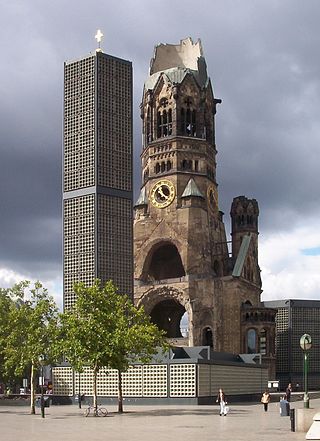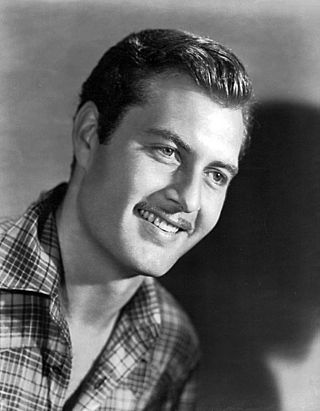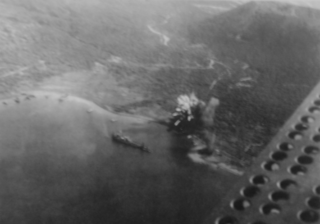
Operation Chastise, commonly known as the Dambusters Raid, was an attack on German dams carried out on the night of 16/17 May 1943 by 617 Squadron RAF Bomber Command, later called the Dam Busters, using special "bouncing bombs" developed by Barnes Wallis. The Möhne and Edersee dams were breached, causing catastrophic flooding of the Ruhr valley and of villages in the Eder valley; the Sorpe Dam sustained only minor damage. Two hydroelectric power stations were destroyed and several more damaged. Factories and mines were also damaged and destroyed. An estimated 1,600 civilians – about 600 Germans and 1,000 enslaved labourers, mainly Soviet – were killed by the flooding. Despite rapid repairs by the Germans, production did not return to normal until September. The RAF lost 56 aircrew, with 53 dead and 3 captured, amid losses of 8 aircraft.

Berlin, the capital of Germany, was subject to 363 air raids during the Second World War. It was bombed by the RAF Bomber Command between 1940 and 1945, the United States Army Air Forces' Eighth Air Force between 1943 and 1945, and the French Air Force in 1940 and between 1944 and 1945 as part of the Allied campaign of strategic bombing of Germany. It was also attacked by aircraft of the Red Air Force in 1941 and particularly in 1945, as Soviet forces closed on the city. British bombers dropped 45,517 tons of bombs, while American aircraft dropped 22,090.3 tons. As the bombings continued, more and more people fled the city. By May 1945, 1.7 million people had fled.

George Montgomery was an American actor, best known for his work in Western films and television. He was also a painter, director, producer, writer, sculptor, furniture craftsman, and stuntman. He was engaged to Hedy Lamarr in 1941, and married Dinah Shore in 1943.

No. 487 (NZ) Squadron was a light bomber squadron established for service during the Second World War. It was a New Zealand squadron formed under Article XV of the Empire Air Training Plan. Although many of its flying personnel were largely drawn from the Royal New Zealand Air Force, the squadron served in Europe under the operational and administrative command of the Royal Air Force as part of Bomber Command. Formed in mid-1942, it operated the Lockheed Ventura and then the de Havilland Mosquito and took part in over 3,000 operational sorties before being disbanded at the end of the war in late 1945.

Kurt Kreuger was a Swiss-reared German actor. Kreuger once was the third-most-requested male actor at 20th Century Fox. He starred with, among others, Ingrid Bergman and Humphrey Bogart.

No. 21 Squadron of the Royal Air Force was formed in 1915 and was disbanded for the last time in 1979.

Operation Hydra was an attack by RAF Bomber Command on a German scientific research centre at Peenemünde on the night of 17/18 August 1943. Group Captain John Searby, commanding officer of No. 83 Squadron RAF, commanded the operation, the first time that Bomber Command used a master bomber to direct the attack of the main force.

Louis V. Arco was an Austrian stage and film actor whose career began in the late 1910s.

The Adventures of Tartu is a 1943 British Second World War spy film directed by Harold S. Bucquet and starring Robert Donat. It was a morale booster of the era portraying Nazis as highly corruptible due to their desire to seduce women and to gain personal advancement.

No. 105 Squadron was a flying squadron of the Royal Air Force, active for three periods between 1917 and 1969. It was originally established during the First World War as a squadron of the Royal Flying Corps and disbanded after the war. Reactivated shortly before the Second World War, it was inactive again after the conflict. During its second existence it was a bomber unit and had the distinction to be the first to operate the de Havilland Mosquito light bomber. During the 1960s it was reactivated again for six years to provide transport support for the British Army in the Aden Protectorate and the Far East.

The Oslo Mosquito raid was a British air raid on Oslo, Norway, during the Second World War. The target of the raid was the Victoria Terrasse building, the headquarters of the Gestapo. It was intended to be a "morale booster" for the Norwegian people and was scheduled to coincide with a rally of Norwegian collaborators, led by Vidkun Quisling. The raid is also known for it being the moment when the Royal Air Force revealed the existence of the Mosquito aircraft to the British public, when the BBC Home Service reported on the raid the following day.

Martin Kosleck was a German film actor. Like many other German actors, he fled when the Nazis came to power. Inspired by his deep hatred of Adolf Hitler and the Nazis, Kosleck made a career in Hollywood playing villainous Nazis in films.

Chetniks! The Fighting Guerrillas is a war film made by Twentieth Century Fox in 1943. The film starred Philip Dorn, Anna Sten, and Martin Kosleck.

The following events occurred in April 1943:
The Hitler Gang is a 1944 American pseudo-documentary film directed by John Farrow, which traces the political rise of Adolf Hitler. Described as a "documentary-propaganda" film by its studio, Paramount Pictures, the historical drama is based on documented fact and marks the first serious effort to portray Hitler in film. The filmmakers chose to avoid casting stars in the lead roles, assembling instead a remarkable company of lookalikes to play Hitler, Goebbels, Himmler, Göring, and other leading Nazis.

The neutralisation of Rabaul was an Allied campaign to render useless the Imperial Japanese base at Rabaul in eastern New Britain, Papua New Guinea. Japanese forces landed on Rabaul on 23 January 1942, capturing it by February 1942, after which the harbor and town were transformed into a major Japanese naval and air installation. The Japanese heavily relied on it, using it as a launching point for Japanese reinforcements to New Guinea and Guadalcanal. Throughout the Solomon Islands campaign, neutralizing Rabaul became the primary objective of the Allied effort in the Solomons.

The following events occurred in August 1943:

The following events occurred in October 1943:

Hostages is an American war film produced by Paramount Pictures and released in 1943. It was directed by Frank Tuttle from a script by Frank Butler and Lester Cole based on the 1942 novel of the same name by Stefan Heym. The film stars Luise Rainer, Arturo de Córdova, William Bendix and Paul Lukas and features Katina Paxinou and Oskar Homolka.

The Aarhus Air Raid took place on 31 October 1944, when 25 Mosquitoes from 140 Wing Royal Air Force (RAF) of the 2nd Tactical Air Force, bombed the Gestapo headquarters at the University of Aarhus, Denmark. After the Second World War, the RAF called the mission the most successful of its kind during the war.




















